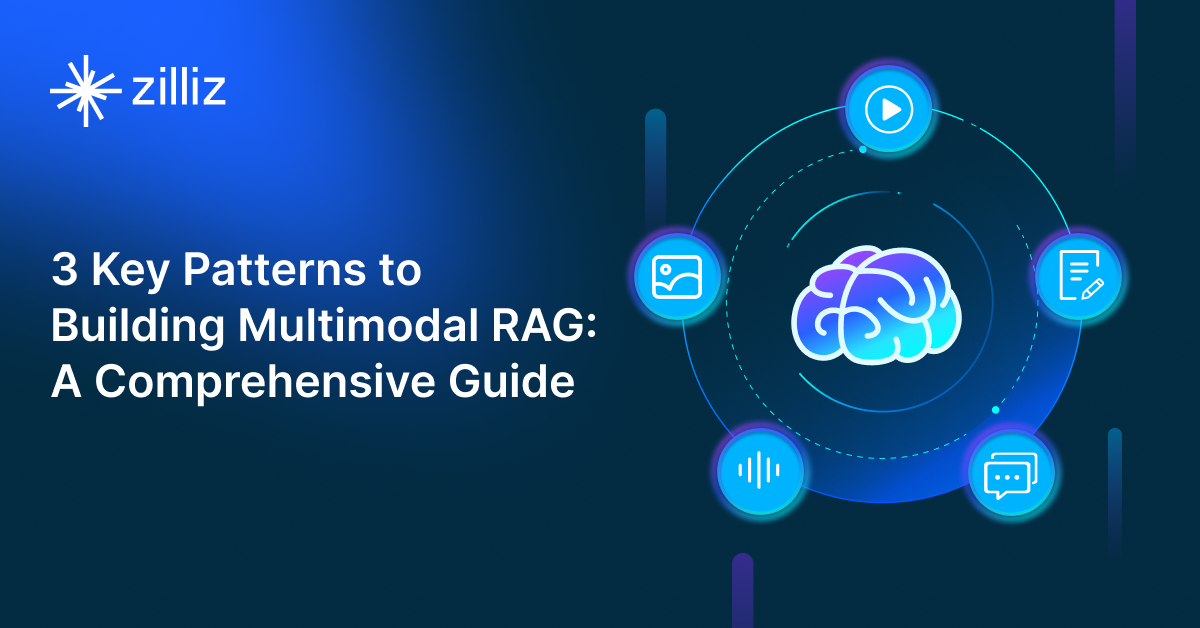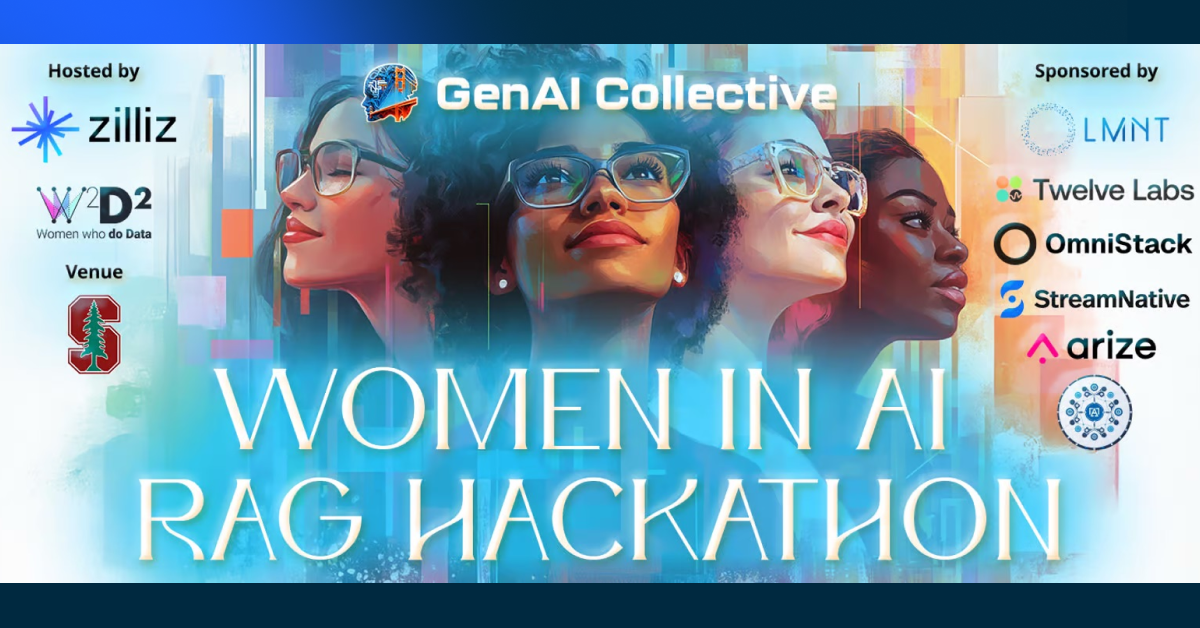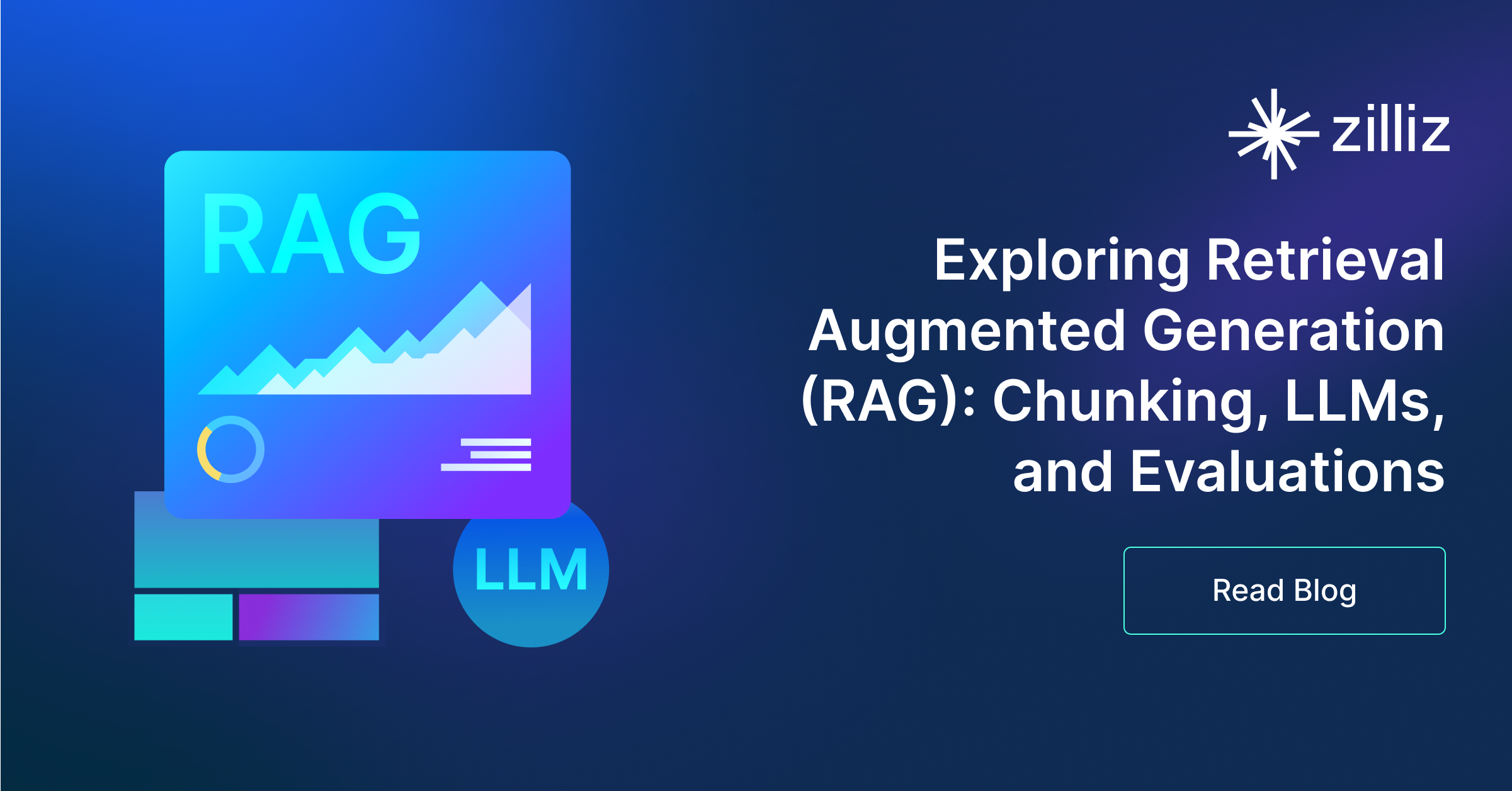Build RAG Chatbot with LangChain, LangChain vector store, Google Vertex AI Claude 3 Sonnet, and HuggingFace all-MiniLM-L12-v1
Introduction to RAG
Retrieval-Augmented Generation (RAG) is a game-changer for GenAI applications, especially in conversational AI. It combines the power of pre-trained large language models (LLMs) like OpenAI’s GPT with external knowledge sources stored in vector databases such as Milvus and Zilliz Cloud, allowing for more accurate, contextually relevant, and up-to-date response generation. A RAG pipeline usually consists of four basic components: a vector database, an embedding model, an LLM, and a framework.
Key Components We'll Use for This RAG Chatbot
This tutorial shows you how to build a simple RAG chatbot in Python using the following components:
- LangChain: An open-source framework that helps you orchestrate the interaction between LLMs, vector stores, embedding models, etc, making it easier to integrate a RAG pipeline.
- LangChain in-memory vector store: an in-memory, ephemeral vector store that stores embeddings in-memory and does an exact, linear search for the most similar embeddings. The default similarity metric is cosine similarity, but can be changed to any of the similarity metrics supported by ml-distance. It is intended for demos and does not yet support ids or deletion. (If you want a much more scalable solution for your apps or even enterprise projects, we recommend using Zilliz Cloud, which is a fully managed vector database service built on the open-source Milvusand offers a free tier supporting up to 1 million vectors.)
- Google Vertex AI Claude 3 Sonnet: This advanced AI model focuses on enhancing generative capabilities for creative applications. It merges powerful language understanding with customizable prompts to generate contextually relevant and coherent text. Ideal for marketing content, storytelling, and interactive AI experiences, it balances creativity with precision to meet diverse user needs.
- HuggingFace all-MiniLM-L12-v1: This model is a lightweight transformer designed for efficient natural language understanding and generation tasks. It excels in providing high-quality embeddings for various applications, including search, clustering, and conversational AI, while maintaining a small footprint for faster inference and deployment. Ideal for resource-constrained environments or mobile applications, it offers a balance between performance and efficiency.
By the end of this tutorial, you’ll have a functional chatbot capable of answering questions based on a custom knowledge base.
Note: Since we may use proprietary models in our tutorials, make sure you have the required API key beforehand.
Step 1: Install and Set Up LangChain
%pip install --quiet --upgrade langchain-text-splitters langchain-community langgraph
Step 2: Install and Set Up Google Vertex AI Claude 3 Sonnet
pip install -qU "langchain[google-vertexai]"
# Ensure your VertexAI credentials are configured
from langchain.chat_models import init_chat_model
llm = init_chat_model("claude-3-sonnet@20240229", model_provider="google_vertexai")
Step 3: Install and Set Up HuggingFace all-MiniLM-L12-v1
pip install -qU langchain-huggingface
from langchain_huggingface import HuggingFaceEmbeddings
embeddings = HuggingFaceEmbeddings(model_name="sentence-transformers/all-MiniLM-L12-v1")
Step 4: Install and Set Up LangChain vector store
pip install -qU langchain-core
from langchain_core.vectorstores import InMemoryVectorStore
vector_store = InMemoryVectorStore(embeddings)
Step 5: Build a RAG Chatbot
Now that you’ve set up all components, let’s start to build a simple chatbot. We’ll use the Milvus introduction doc as a private knowledge base. You can replace it with your own dataset to customize your RAG chatbot.
import bs4
from langchain import hub
from langchain_community.document_loaders import WebBaseLoader
from langchain_core.documents import Document
from langchain_text_splitters import RecursiveCharacterTextSplitter
from langgraph.graph import START, StateGraph
from typing_extensions import List, TypedDict
# Load and chunk contents of the blog
loader = WebBaseLoader(
web_paths=("https://milvus.io/docs/overview.md",),
bs_kwargs=dict(
parse_only=bs4.SoupStrainer(
class_=("doc-style doc-post-content")
)
),
)
docs = loader.load()
text_splitter = RecursiveCharacterTextSplitter(chunk_size=1000, chunk_overlap=200)
all_splits = text_splitter.split_documents(docs)
# Index chunks
_ = vector_store.add_documents(documents=all_splits)
# Define prompt for question-answering
prompt = hub.pull("rlm/rag-prompt")
# Define state for application
class State(TypedDict):
question: str
context: List[Document]
answer: str
# Define application steps
def retrieve(state: State):
retrieved_docs = vector_store.similarity_search(state["question"])
return {"context": retrieved_docs}
def generate(state: State):
docs_content = "\n\n".join(doc.page_content for doc in state["context"])
messages = prompt.invoke({"question": state["question"], "context": docs_content})
response = llm.invoke(messages)
return {"answer": response.content}
# Compile application and test
graph_builder = StateGraph(State).add_sequence([retrieve, generate])
graph_builder.add_edge(START, "retrieve")
graph = graph_builder.compile()
Test the Chatbot
Yeah! You've built your own chatbot. Let's ask the chatbot a question.
response = graph.invoke({"question": "What data types does Milvus support?"})
print(response["answer"])
Example Output
Milvus supports various data types including sparse vectors, binary vectors, JSON, and arrays. Additionally, it handles common numerical and character types, making it versatile for different data modeling needs. This allows users to manage unstructured or multi-modal data efficiently.
Optimization Tips
As you build your RAG system, optimization is key to ensuring peak performance and efficiency. While setting up the components is an essential first step, fine-tuning each one will help you create a solution that works even better and scales seamlessly. In this section, we’ll share some practical tips for optimizing all these components, giving you the edge to build smarter, faster, and more responsive RAG applications.
LangChain optimization tips
To optimize LangChain, focus on minimizing redundant operations in your workflow by structuring your chains and agents efficiently. Use caching to avoid repeated computations, speeding up your system, and experiment with modular design to ensure that components like models or databases can be easily swapped out. This will provide both flexibility and efficiency, allowing you to quickly scale your system without unnecessary delays or complications.
LangChain in-memory vector store optimization tips
LangChain in-memory vector store is just an ephemeral vector store that stores embeddings in-memory and does an exact, linear search for the most similar embeddings. It has very limited features and is only intended for demos. If you plan to build a functional or even production-level solution, we recommend using Zilliz Cloud, which is a fully managed vector database service built on the open-source Milvus and offers a free tier supporting up to 1 million vectors.)
Google Vertex AI Claude 3 Sonnet optimization tips
Claude 3 Sonnet on Google Vertex AI balances efficiency and reasoning power, making it a great choice for general-purpose RAG setups. Optimize retrieval by dynamically adjusting the number of retrieved documents based on query complexity to maintain context quality. Keep prompts concise and well-structured, avoiding redundancy. Set temperature between 0.1 and 0.3 to balance factual consistency and response diversity. Cache commonly used queries to minimize latency and reduce token costs. Take advantage of Google’s autoscaling features to manage variable workloads. If deploying multiple models, position Sonnet as the mid-tier option, handling moderately complex queries without the computational overhead of Opus.
HuggingFace all-MiniLM-L12-v1 optimization tips
To optimize the HuggingFace all-MiniLM-L12-v1 model for your Retrieval-Augmented Generation (RAG) setup, consider implementing mixed precision training to speed up computations and reduce memory usage, enabling you to handle larger batch sizes. Experiment with layer freezing during fine-tuning to preserve certain parameters while optimizing others, ensuring faster convergence. Use an efficient data preprocessing pipeline to reduce input bottlenecks, and implement caching mechanisms for frequently accessed data. Furthermore, leverage model distillation techniques to create smaller, faster versions of the model that maintain comparable performance, and experiment with different pooling strategies to find the most effective way to condense retrieved documents for better context input. Lastly, regularly monitor and fine-tune hyperparameters such as learning rate and batch size based on validation performance to achieve optimal results.
By implementing these tips across your components, you'll be able to enhance the performance and functionality of your RAG system, ensuring it’s optimized for both speed and accuracy. Keep testing, iterating, and refining your setup to stay ahead in the ever-evolving world of AI development.
RAG Cost Calculator: A Free Tool to Calculate Your Cost in Seconds
Estimating the cost of a Retrieval-Augmented Generation (RAG) pipeline involves analyzing expenses across vector storage, compute resources, and API usage. Key cost drivers include vector database queries, embedding generation, and LLM inference.
RAG Cost Calculator is a free tool that quickly estimates the cost of building a RAG pipeline, including chunking, embedding, vector storage/search, and LLM generation. It also helps you identify cost-saving opportunities and achieve up to 10x cost reduction on vector databases with the serverless option.
 Calculate your RAG cost
Calculate your RAG cost
What Have You Learned?
By diving into this tutorial, you’ve unlocked the magic of building a RAG system from the ground up! You learned how LangChain acts as the glue holding everything together—orchestrating workflows between your vector database, language model, and embedding model like a conductor leading a symphony. The LangChain vector store transformed your raw data into a searchable knowledge vault, enabling lightning-fast retrieval of relevant information. Then came the star of the show: Google Vertex AI’s Claude 3 Sonnet, which turned those retrieved snippets into human-like, context-aware responses that feel almost telepathic. And let’s not forget HuggingFace’s all-MiniLM-L12-v1 embedding model, the unsung hero that converted text into rich numerical vectors, making semantic search possible. You even picked up pro tips for optimizing performance and cost, like tweaking chunk sizes and using the free RAG cost calculator to budget like a pro.
Now you’re equipped to build intelligent systems that don’t just answer questions—they understand them. Imagine the apps you’ll create: chatbots that feel alive, research tools that dig deeper than ever, or personalized assistants that adapt to users’ needs. The best part? You’ve got the tools to iterate, experiment, and push boundaries. Use that cost calculator to scale smartly, play with different models, and fine-tune your pipeline until it hums. The world of AI is your playground, and you’ve just leveled up your skills. So go ahead—build something bold, optimize fearlessly, and let your creativity run wild. The future of RAG is in your hands, and it’s going to be epic! 🚀
Further Resources
🌟 In addition to this RAG tutorial, unleash your full potential with these incredible resources to level up your RAG skills.
- How to Build a Multimodal RAG | Documentation
- How to Enhance the Performance of Your RAG Pipeline
- Graph RAG with Milvus | Documentation
- How to Evaluate RAG Applications - Zilliz Learn
- Generative AI Resource Hub | Zilliz
We'd Love to Hear What You Think!
We’d love to hear your thoughts! 🌟 Leave your questions or comments below or join our vibrant Milvus Discord community to share your experiences, ask questions, or connect with thousands of AI enthusiasts. Your journey matters to us!
If you like this tutorial, show your support by giving our Milvus GitHub repo a star ⭐—it means the world to us and inspires us to keep creating! 💖
- Introduction to RAG
- Key Components We'll Use for This RAG Chatbot
- Step 1: Install and Set Up LangChain
- Step 2: Install and Set Up Google Vertex AI Claude 3 Sonnet
- Step 3: Install and Set Up HuggingFace all-MiniLM-L12-v1
- Step 4: Install and Set Up LangChain vector store
- Step 5: Build a RAG Chatbot
- Optimization Tips
- RAG Cost Calculator: A Free Tool to Calculate Your Cost in Seconds
- What Have You Learned?
- Further Resources
- We'd Love to Hear What You Think!
Content
Vector Database at Scale
Zilliz Cloud is a fully-managed vector database built for scale, perfect for your RAG apps.
Try Zilliz Cloud for Free


